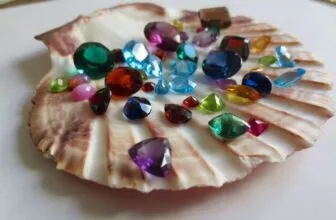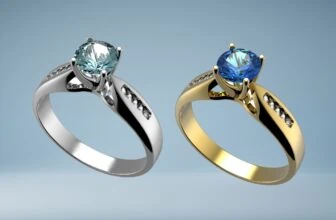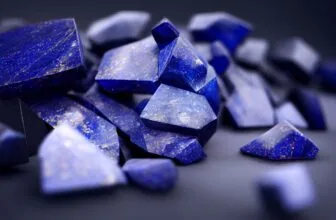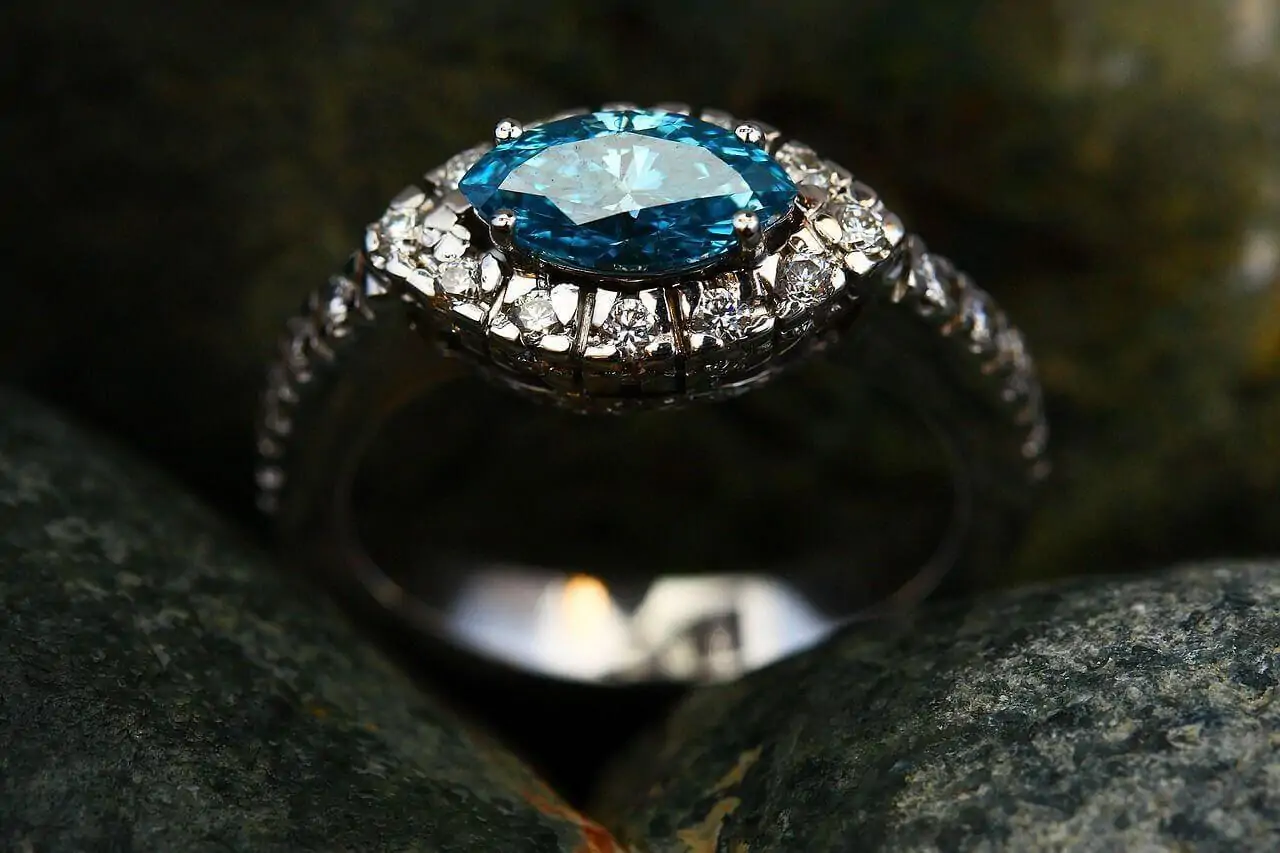
Table of Contents
Blue is arguably the most popular gemstone color for use in jewelry. There is a wide range of blue gemstones to choose from, from common blue chalcedony to the rarest blue diamonds.
From a color psychology point of view, blue is associated with depth, stability, knowledge, power, gravity, and calmness. It also symbolizes confidence, trust, faith, and truth. Blue gemstones, in all their shades, textures, and vividness, are simply beautiful.
These reasons are why blue is among the most popular color for engagement rings. In fact, the world’s most iconic engagement ring (that of Princess Diana, now worn by Kate Middleton) boasts a large blue Ceylon sapphire.
In this article, we’ve listed the top 25 blue gemstones used in jewelry, highlighting their pros and cons.
Blue Gemstones List
1. Blue Diamond
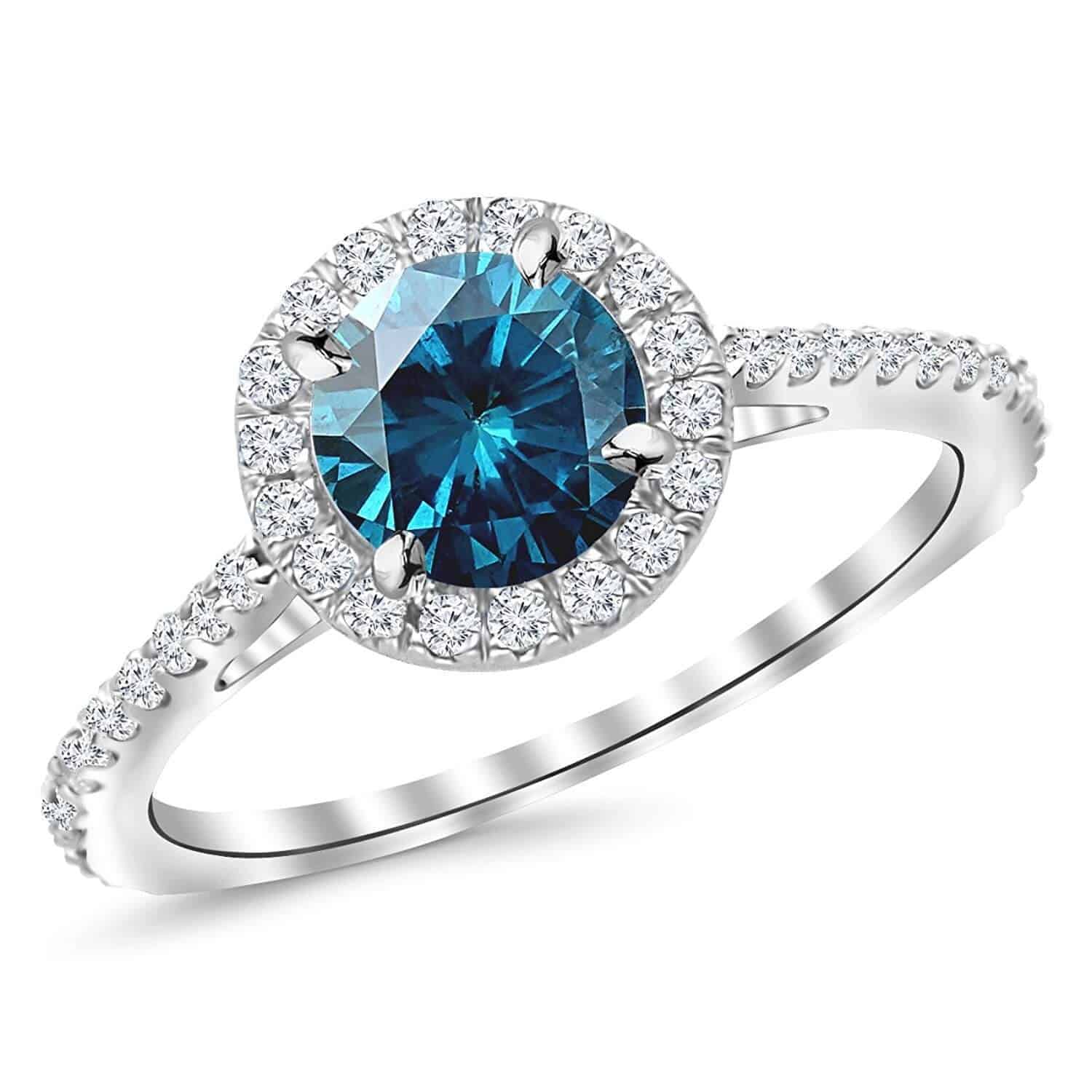
Blue diamonds are among the rarest of all colored diamond varieties and among the most expensive. These gemstones receive their color through the traces of boron present during the stone’s formation.
Blue diamonds have the same properties as colorless diamonds, with exceptional brilliance and fire, and a perfect hardness rating of 10. However, although diamonds are extremely scratch resistant, they are not the toughest gemstone, and, as they are rather brittle, there is the likelihood that a blue diamond can break if exposed to hard knocks.
Blue diamonds come in a range of shades, with the best considered Fancy Deep. There can also sometimes be greenish tints to the stone.
Synthetic and treated versions provide a much more affordable alternative if your heart is set on a blue diamond but finds it beyond your budget.
2. Blue Sapphire
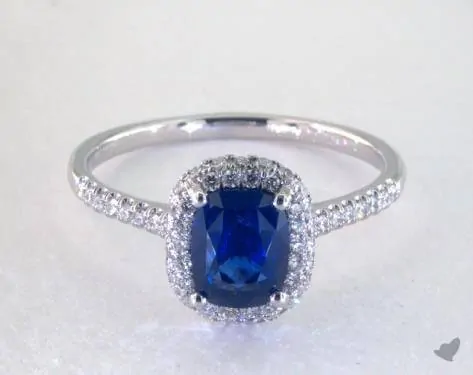
Sapphire is the most popular blue gemstone, and possibly the most highly sought-after colored gemstone for engagement rings. While blue is the most well-known sapphire color, which can be found in a range of colors.
Sapphire is made of corundum and becomes blue due to the presence of titanium and iron during its formation. It is second in hardness only to diamonds (Mohs 9) among natural gemstones used in jewelry. Sapphire is tougher than diamonds and is highly resistant to breaking and chipping. Blue sapphires with purplish tints are more desirable while those with greenish tints are not as valuable.
Although blue sapphires are more affordable than diamonds, they can still be somewhat pricey. Synthetic versions of blue sapphire are much more affordable. Blue sapphire is a September birthstone and makes great gifts for those born in September.
3. Aquamarine
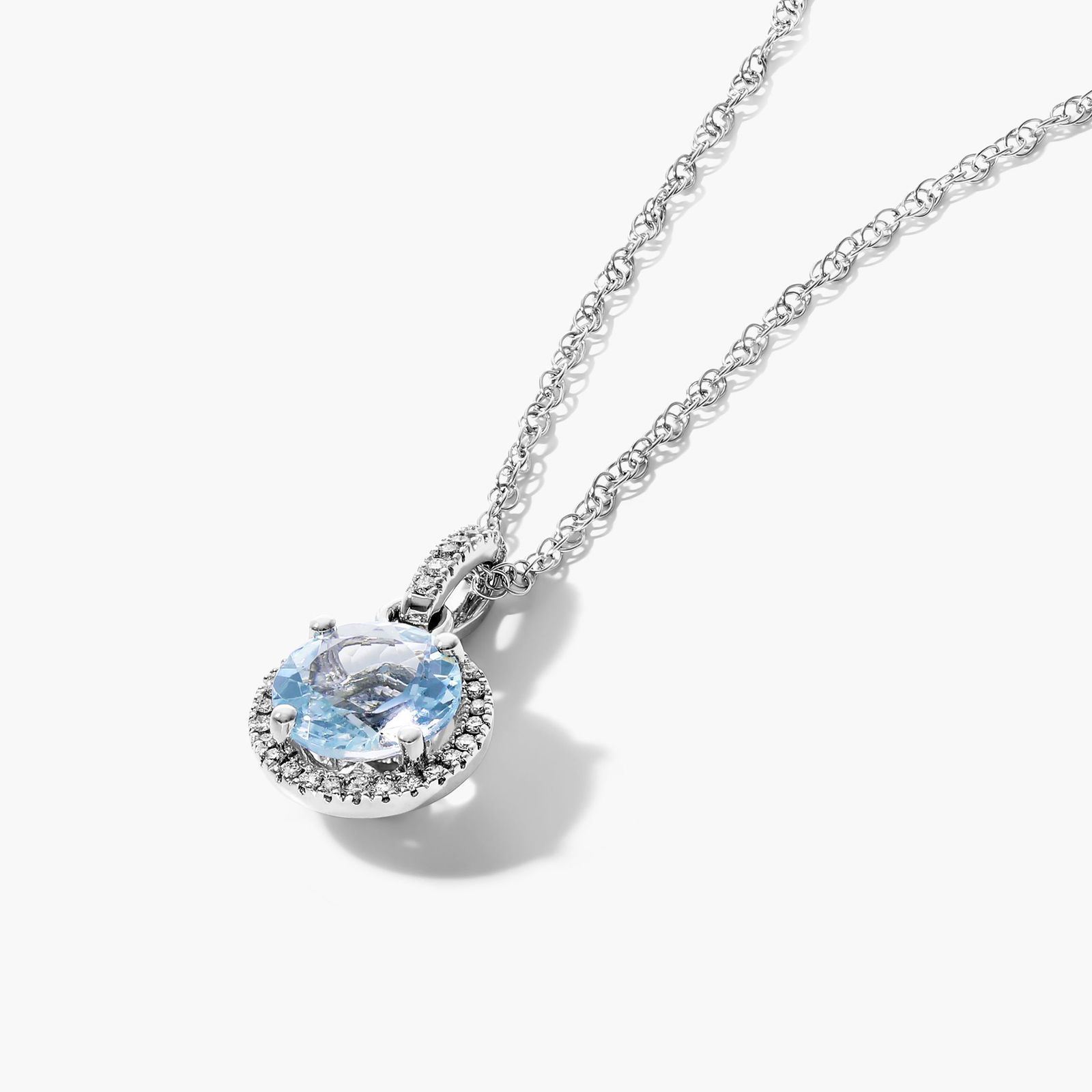
The very word aquamarine refers to the sea-blue color of the stone. Aquamarine gemstones are known for their distinct pastel blue shades that evoke calmness and relaxation.
Aquamarine is a member of the beryl family, along with other gemstones such as emerald and morganite. It is a hard gemstone with a Mohs ranking of 7.5 to 8 and is generally found with very good clarity. It is quite a tough stone and is not prone to breakage.
Aquamarine has a vitreous luster and when faceted, reflects light well. Vivid deep blue stones are considered the most valuable. Most aquamarine gemstones on the market are heat treated to enhance the color of the stone but this is a common industry standard. Aquamarine is the birthstone of March. This gemstone is very good for daily wear and is quite durable.
4. Blue Topaz
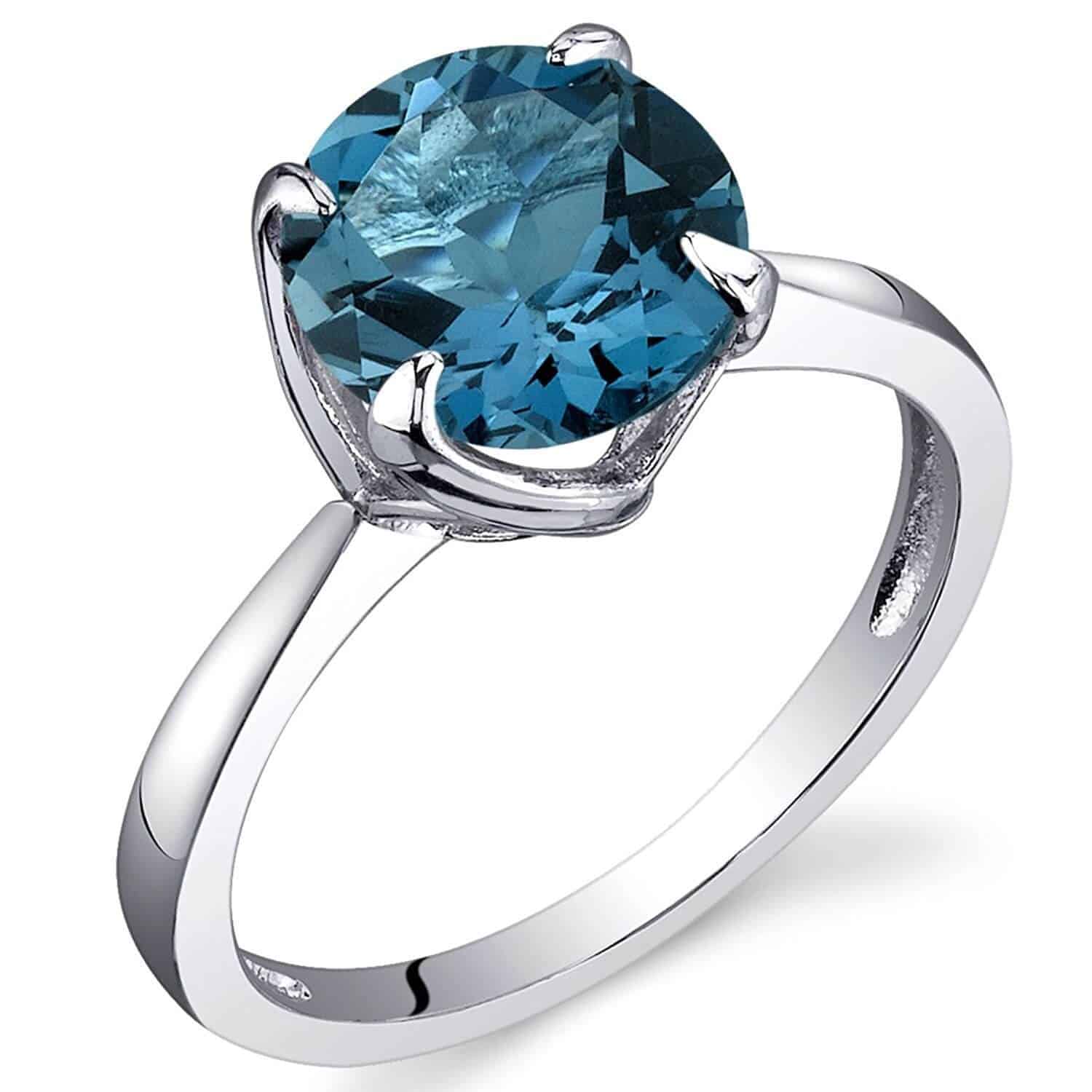
Blue topaz is among the most popular blue gemstones. Most topaz found in nature is colorless, and as a result, is heat treated in order to produce the beautiful shades of blue topaz found on the market. The most expensive blue topaz varieties are London Blue, Sierra Blue, and Swiss Blue, which are darker versions of the stone.
Blue topaz is generally very affordable and is a good gemstone for jewelry due to its durability (8 Mohs). It is often free of visible inclusions and has a beautiful transparent luster.
Blue topaz is a birthstone for December (along with zircon, topaz, turquoise, and tanzanite).
5. Blue Tourmaline
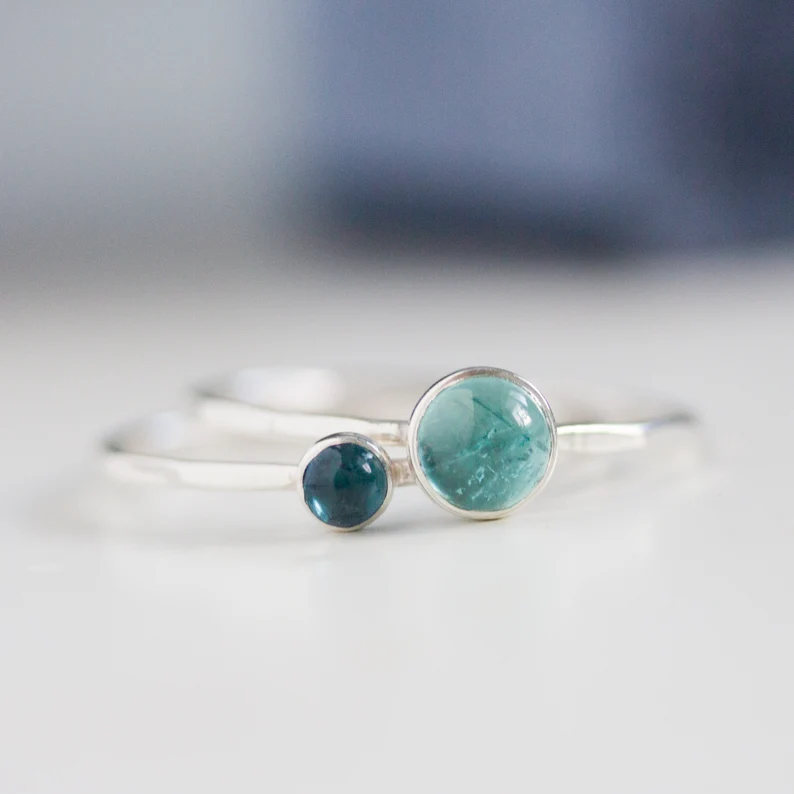
Blue tourmaline comes in two varieties: Paraiba tourmaline and indicolite tourmaline. Paraiba tourmaline has a vivid, luminescent blue color while indicolite comes in light to dark shades of blue. Blue tourmaline in general is extremely rare and is found in small sizes, typically under one carat.
Most blue tourmaline comes with greenish tints, however pure blue stones are highly coveted and valuable. Blue tourmaline has a hardness rating of 7 to 7.5 on the Mohs scale and is a durable, tough stone. With reasonable care, tourmaline jewelry can last a very long time. Tourmaline is the birthstone for October.
6. Blue Zircon
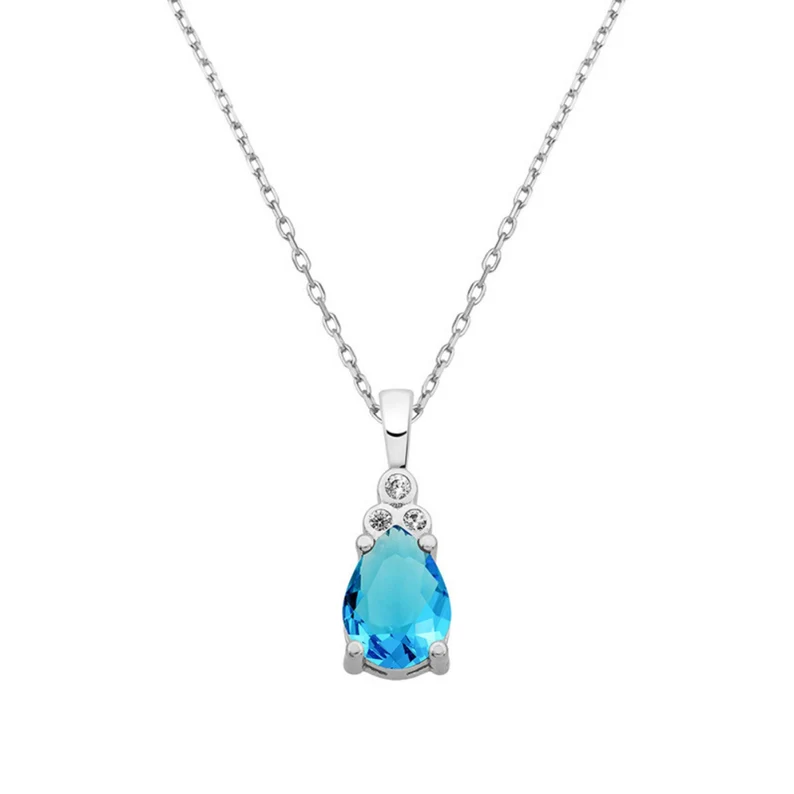
Blue zircon is among the most brilliant gemstones in the world and looks very similar to a blue diamond, exhibiting a comparable sparkle. Blue is the most popular zircon color and comes in shades ranging from light pastel blue to darker vivid blue. Stones with vivid saturation are very rare and prized.
Blue zircon is not very hard, ranking at 6 to 7.5 on the Mohs scale. It is also a brittle stone and can get damaged or worn down over time, so it needs to be mounted in protective settings. Blue zircon is a December birthstone.
Note: Zircon should not be confused with cubic zirconia. Read Cubic zirconia vs. zircon for more information.
7. Blue Garnet
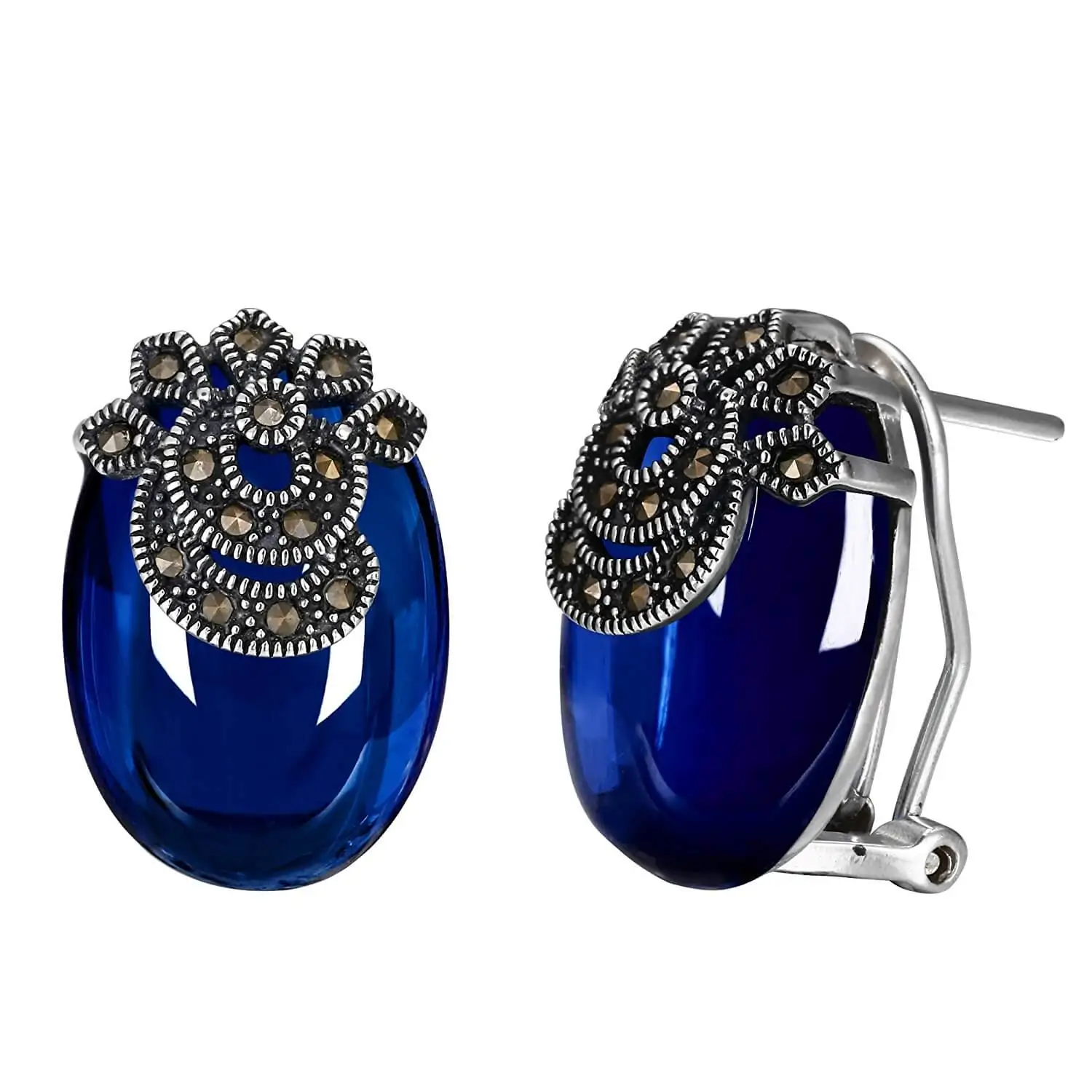
While garnets are popularly known to be red, they were found in every color except blue until 1998. So blue garnets are a very recent addition to the world of gemstones and are extremely rare. In fact, they are more collector’s items as the rarity makes it difficult for jewelers to use the gemstone for mainstream jewelry making.
Blue garnets are similar to alexandrites in that they are color-changing gemstones. The stone can change color based on the light it is viewed under, morphing from blue-green to deep purple. This is due to the inclusion of vanadium in the stone.
Blue garnets rank 6.5 to 7 on the Mohs scale. They are fairly hard and durable. However, finding a blue garnet can be difficult as it is not a mainstream gemstone.
8. Tanzanite
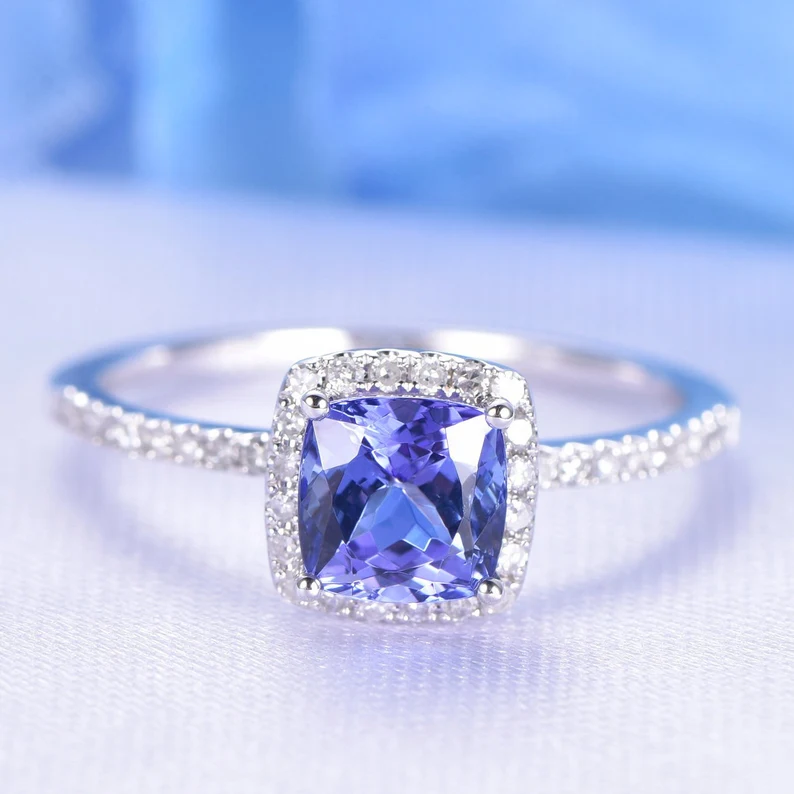
Tanzanite, so named after the country it was found in – Tanzania, is a very rare gemstone. The color of tanzanite can be very vivid and is easily confused with the more valuable sapphire. It is the blue-purple variety of zoisite. Tanzanite is only found in a small region at the foot of Mt. Kilimanjaro and it is estimated that the world’s primary tanzanite source will run out in the next few decades.
Tanzanite is often believed to be an underrated gemstone as it is as beautiful as more expensive blue gemstones but not as popular. It ranks at 6.5 to 7 on the Mohs scale and with good care can last a very long time. Tanzanite ranges from light blue to intense, vivid blue. Often, purple is a secondary color in tanzanite stones. Pure blue tanzanite with vivid saturation is the most desired.
Tanzanite is an excellent alternative to sapphires if budget is a concern.
9. Turquoise
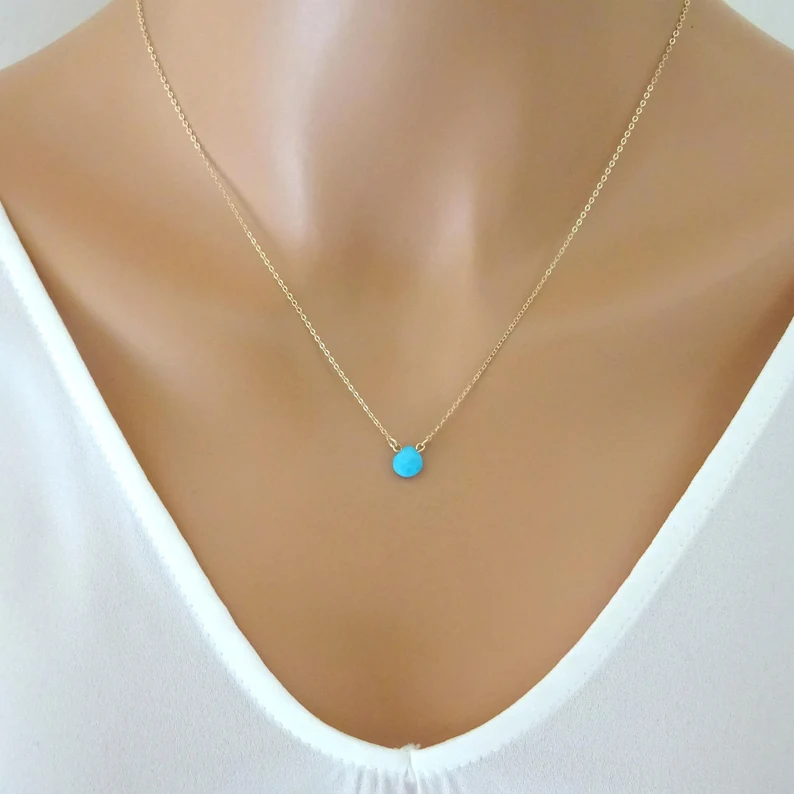
Turquoise is a unique, stone that is easily identified and is the only gemstone with a color named after it. It is generally opaque and often contains dark vein-like inclusions, called matrix.
While inclusion-free, pure blue turquoise is the most valuable and desired, turquoise with matrix is distinct and unique. Turquoise is formed when water seeps through mineral-rich rocks, which sets off a chemical reaction. Over time, this slowly forms into a beautiful and unique-looking gemstone.
Turquoise is quite a soft stone, ranking 5 to 6 on the Mohs scale. It is also porous which makes it highly susceptible to breakage and damage when exposed to chemicals or rough wear. Turquoise jewelry needs to be given care and thought to maintain its luster and integrity.
10. Iolite
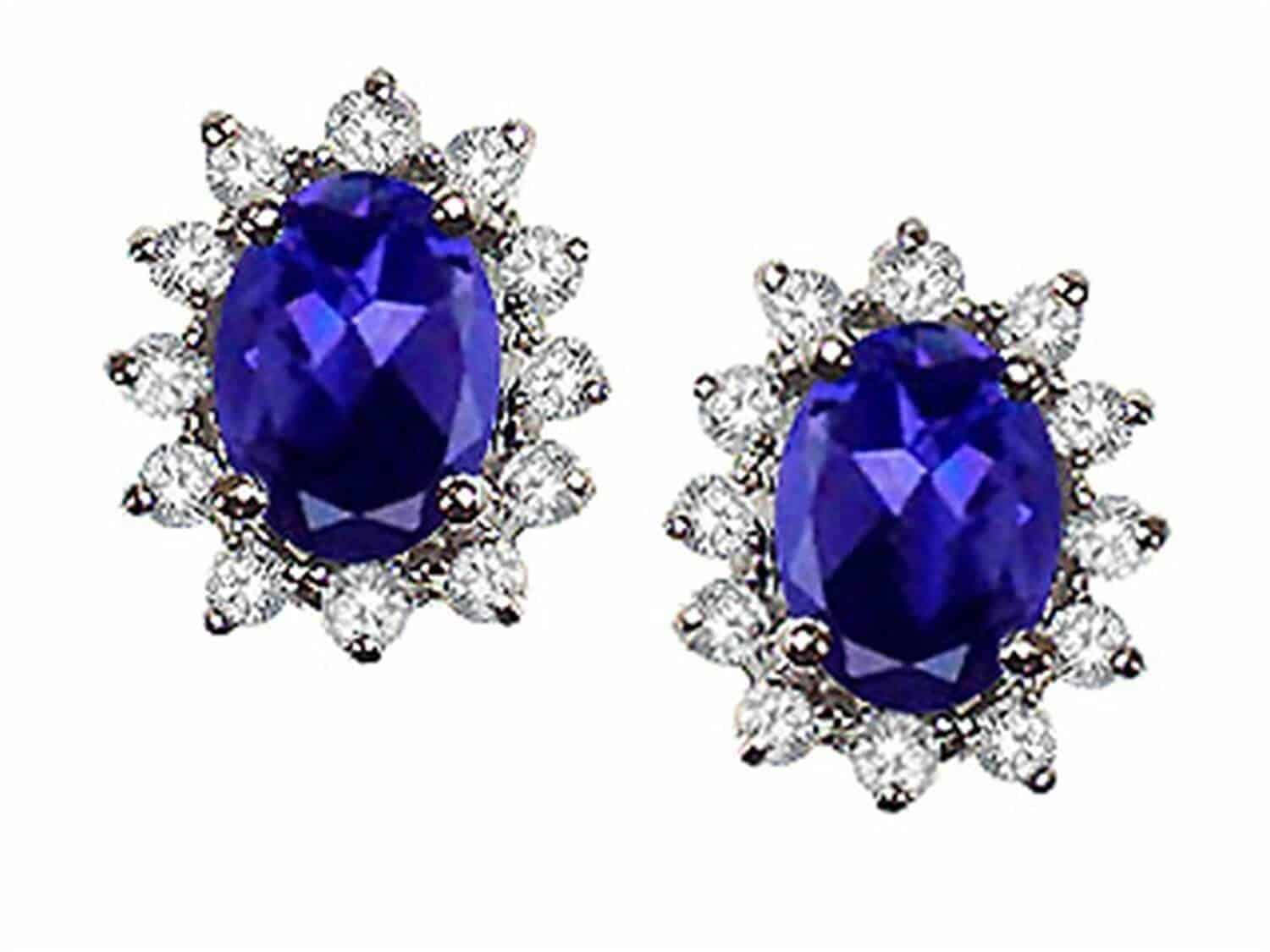
Iolite can be found in many shades of blue and purple-blue, from pale to vivid. High-quality iolite can rival stones such as sapphires and tanzanite in its beauty. However, because it is plentiful in nature, iolite is not highly valued. Iolite is a very brilliant stone and reflects light very well, especially when expertly cut.
Iolite ranks at 7 to 7.5 on the Mohs scale. This makes it a fairly hard stone, however, it is not very tough due to its distinct cleavage. This makes it susceptible to breaking when exposed to knocks and bumps. Most iolite is transparent and has good clarity. Iolite also exhibits pleochroism and can appear blue, purple-blue, and yellowish simultaneously.
11. Lapis Lazuli
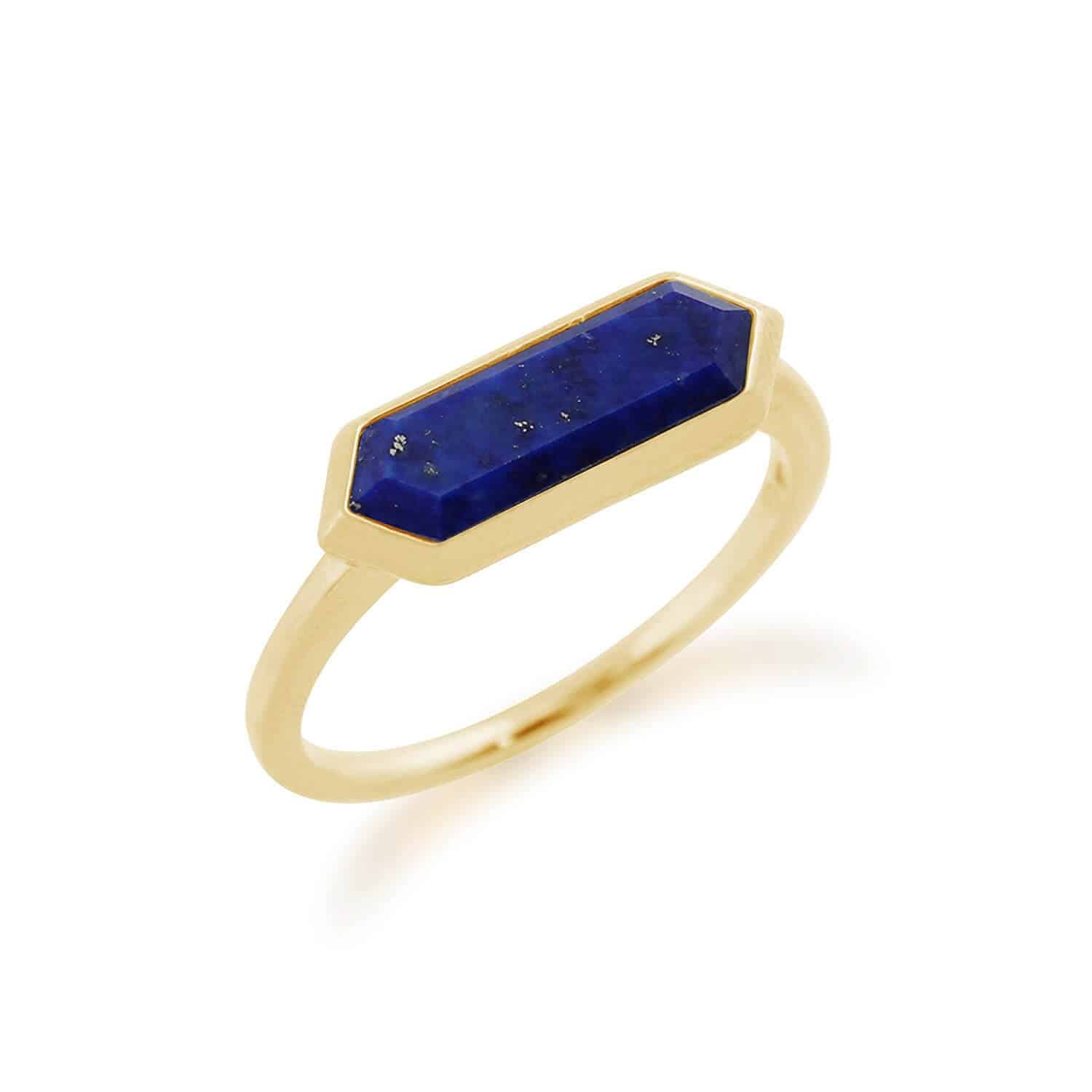
This is among the most popular blue gemstones and has been valued and used throughout history. The use of lapis lazuli in jewelry can be traced back several thousands of years. Lapis lazuli is found in beautiful shades of deep blue. Sometimes it can contain white marbling, due to inclusions in the stone, which makes for interesting and intriguing patterns on the stone.
Lapis lazuli (often simply called lapis) is composed of several types of minerals, with lazurite being the reason for the deep blue color. Lapis is an opaque stone and is often found with inclusions. It is not a very hard gemstone, ranking only 5 to 6 on the Mohs scale. However, with reasonable care, lapis jewelry can last a very long time.
12. Blue Labradorite
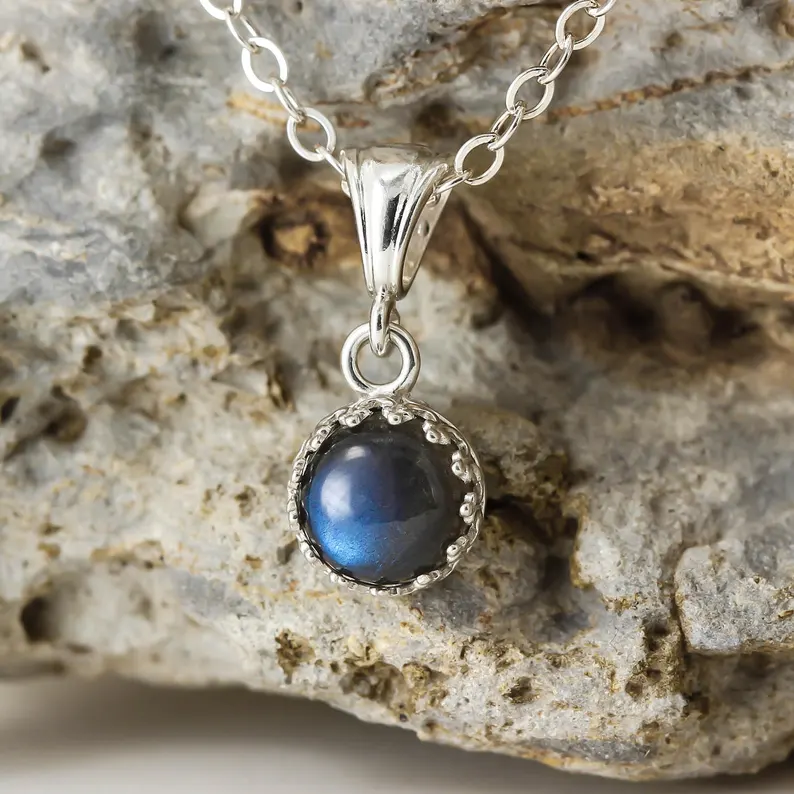
Labradorite is known for its distinct iridescence and beautiful body color, set against a dark body tone. The gemstone comes in three distinct varieties, with some containing strong blue iridescent luster (known as schiller) and others displaying the entire spectrum of colors.
Labradorite is a plagioclase feldspar and displays its distinct labradorescence due to the way in which the rock is formed and the impurities within it. Most labradorites come in opaque to transparent varieties, although these last are quite rare and are not very desirable as they don’t display labradorescence.
Ranking at 6 to 6.5 on the Mohs scale, is not very scratch resistant but is a fairly tough stone. Labradorite is durable enough to be used in jewelry.
13. Blue Spinel
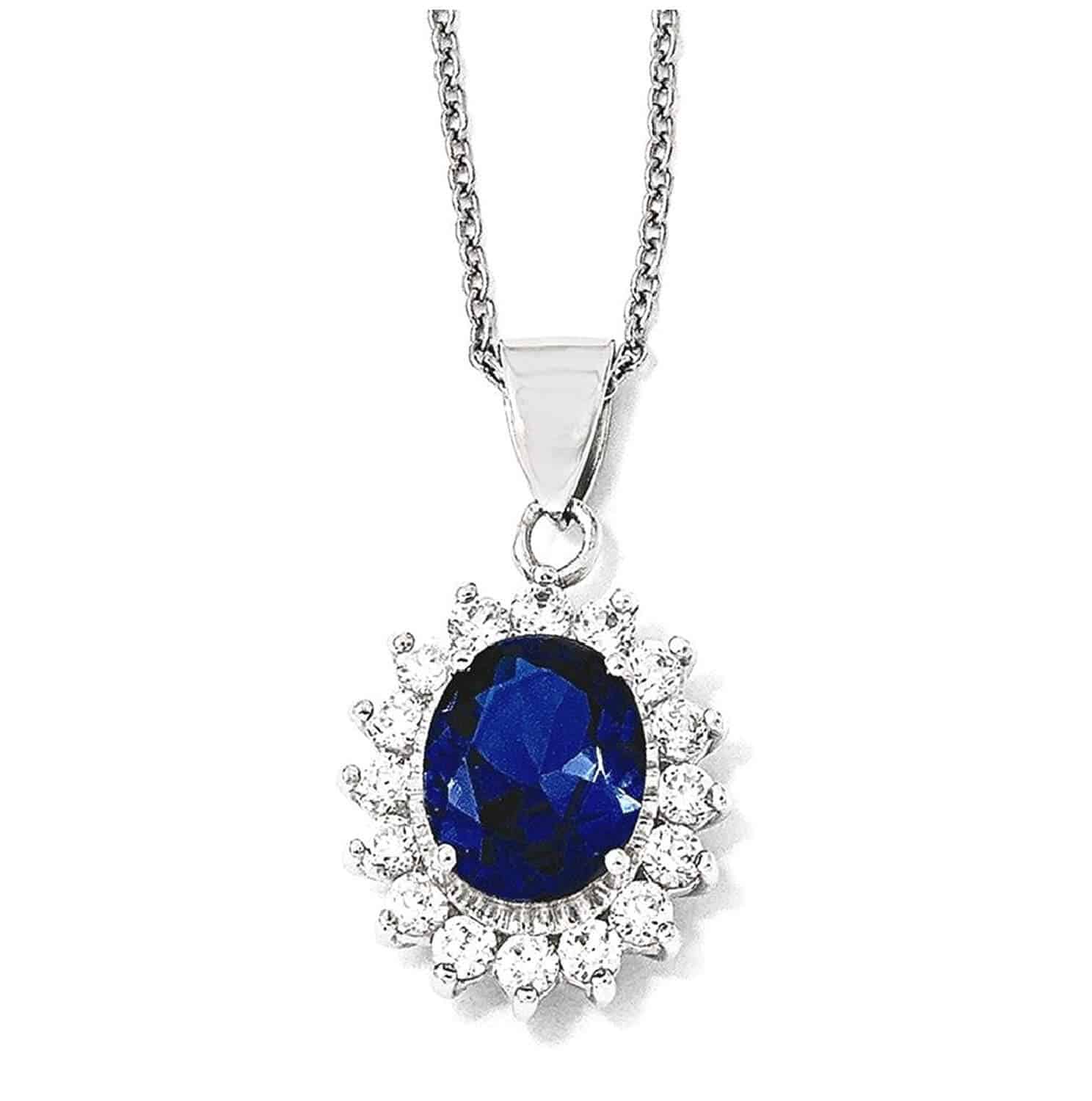
Spinel is often called the great imposter of the jewelry world as it was confused for sapphires for many centuries. Spinel is made of magnesium aluminate and is found in the same mines as corundum varieties. Most blue spinel is eye-clean and exhibits brilliance and fire when expertly cut.
Although spinel is a very rare gemstone, and similar to sapphires in durability and beauty, it is not as valuable and can be found at affordable prices. Spinel is never treated or heated although it has been synthesized. Spinel ranks 8 on the Mohs scale and is a durable gemstone for everyday wear.
14. Apatite
Blue apatite is a mineral primarily found in Brazil, Mexico, Madagascar, and Canada. This gemstone is named after the Greek word “apate,” which means to deceive, because of its ability to mimic other gemstones.
Blue apatite is typically untreated, but some stones may undergo heat treatment to improve their color and clarity. It’s a relatively hard gemstone with a hardness rating of 5 on the Mohs scale, making it durable enough for daily wear. However, it should still be handled with care and protected from scratches and hard blows.
15. Azurite
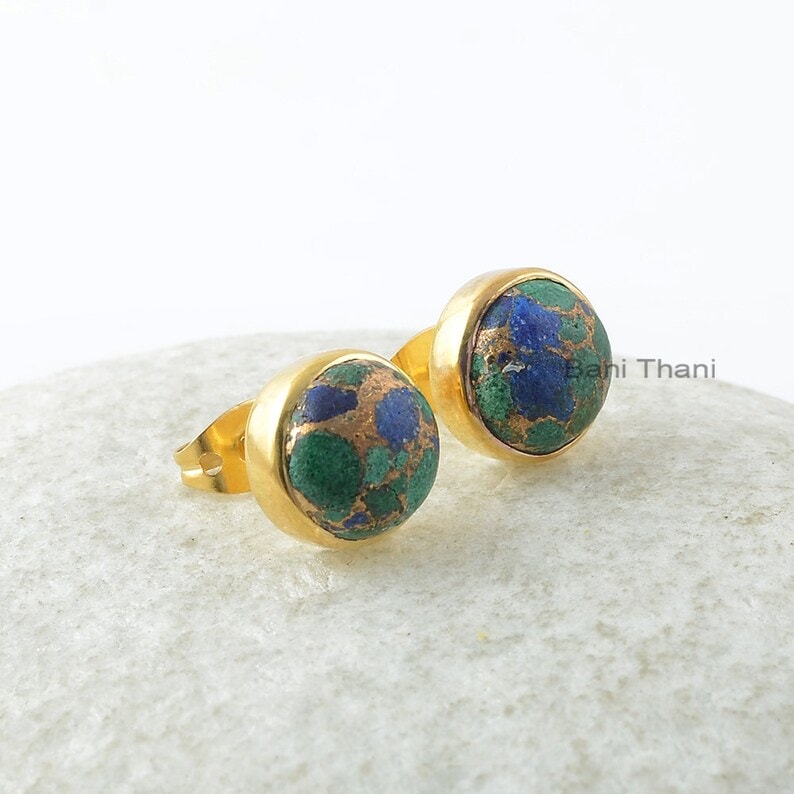
Azurite is often found in combination with malachite, which can result in stunning banded patterns. The value of blue azurite varies depending on the quality and size of the gemstone. High-quality blue azurite gemstones with intense color and minimal impurities are more valuable in the market. Blue azurite is a soft gemstone with a Mohs hardness rating of 3.5 to 4, which means it is not suitable for daily wear and should be handled with care.
Azurite is often used in jewelry and decorative objects, including sculptures, vases, and other art forms. It has also been used throughout history for spiritual and healing purposes. The deep blue color of azurite is said to promote communication and self-expression while enhancing intuition and creativity.
16. Blue Chalcedony
Blue chalcedony is a mesmerizing gemstone with a stunning sky-blue hue that can range from light to dark. It’s a type of cryptocrystalline quartz that’s been treasured for its beauty and metaphysical properties for centuries. In ancient times, blue chalcedony was believed to promote peace, harmony, and tranquility, and was often used in jewelry and amulets for protection and healing.
Aside from its spiritual properties, blue chalcedony is also prized for its durability and versatility. It has a hardness of 6.5-7 on the Mohs scale, making it a relatively durable gemstone for everyday wear. It’s commonly used in the creation of stunning jewelry pieces, such as pendants, earrings, and rings, and is often paired with other gemstones to create a unique and eye-catching design.
17. Blue Fluorite
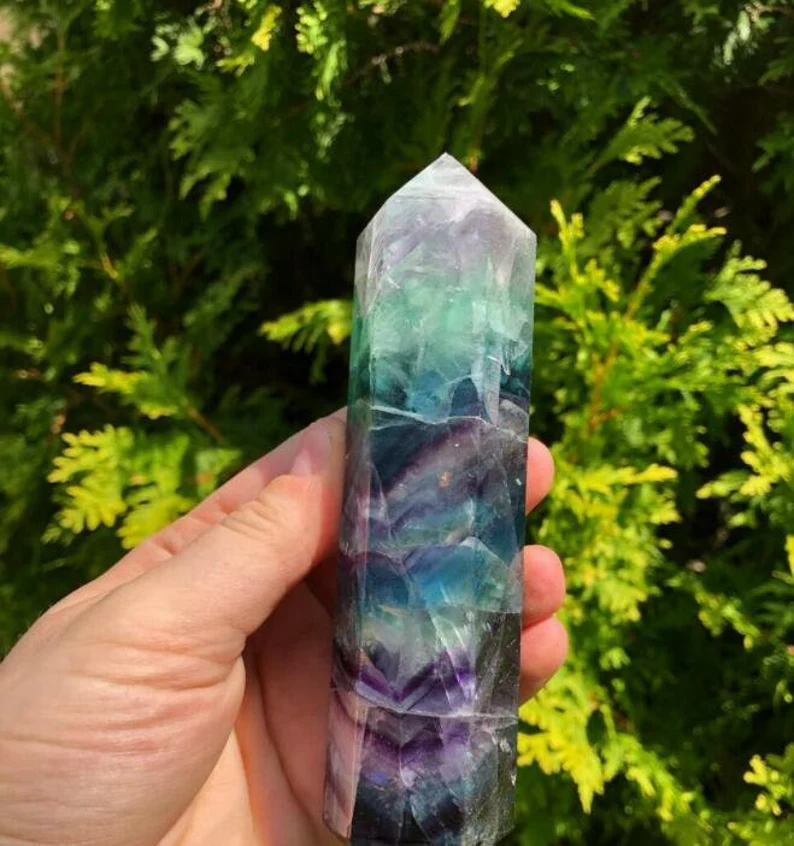
Blue fluorite is renowned for its soothing energy and ability to calm the mind and emotions. However, aside from its spiritual properties, it’s also prized for its beauty and versatility. It’s a relatively hard gemstone, with a hardness of 4 on the Mohs scale, which makes it suitable for use in jewelry and other decorative items.
The stone’s unique color and translucency make it a popular choice for statement pieces, such as pendants and rings, and it’s often paired with other gemstones to create stunning and unique designs. In addition to its beauty, blue fluorite is also believed to have healing properties, particularly for the throat chakra. It’s said to promote clear communication, enhance creativity, and encourage inner peace and harmony.
18. Sodalite
Beyond its beauty, blue sodalite is believed to have many metaphysical properties. It’s said to promote calmness, clarity, and inner peace, making it a popular choice for meditation and spiritual practices. It’s also believed to enhance communication and creativity, and is often used by writers and artists to promote inspiration and imagination.
Blue sodalite is a relatively hard stone, with a hardness of 5.5-6 on the Mohs scale, which makes it durable enough for everyday wear in jewelry. It’s often used in necklaces, bracelets, and earrings, and its unique blue and white coloring makes it a standout gemstone in any piece.
19. Blue Opal
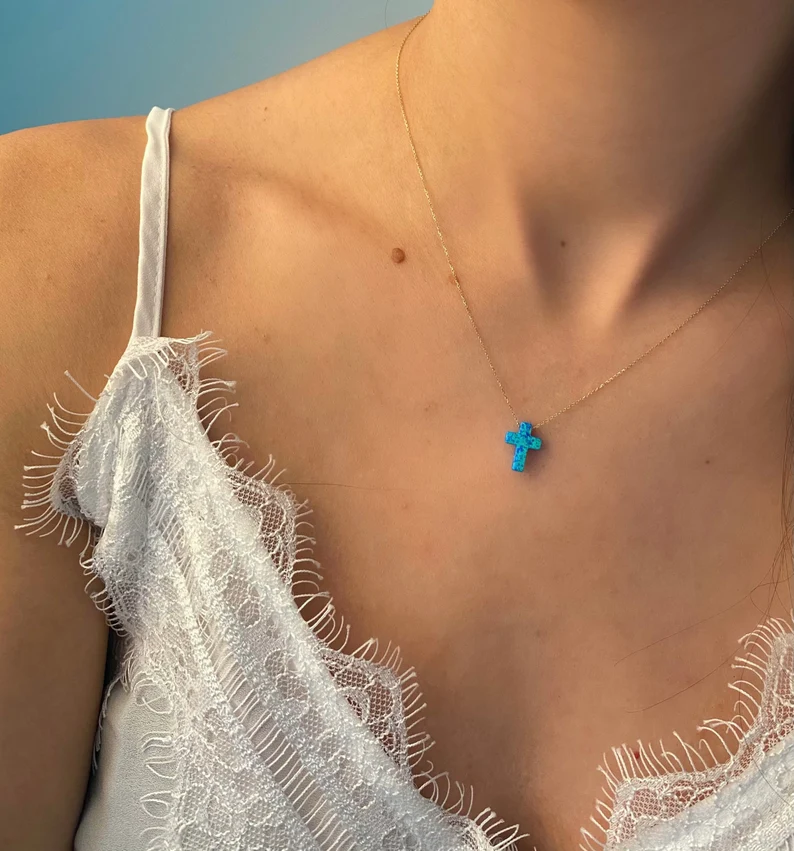
Blue opal is a soft stone, with a hardness of 5.5-6 on the Mohs scale, which makes it best suited for use in earrings, necklaces, and other types of jewelry that are not subjected to heavy wear and tear. Despite its softness, blue opal is a popular choice for jewelry designers and is often paired with other gemstones, such as diamonds or pearls, to create unique and eye-catching designs.
In addition to its beauty, blue opal is also believed to have healing properties. It’s said to promote peace, tranquility, and inner harmony. Whether worn for its aesthetic or metaphysical properties, blue opal is a captivating gemstone that’s sure to turn heads.
20. Blue Jade
Blue jade is a fascinating and unique gemstone that displays a captivating blue-green hue. This rare stone is known for its delicate and intricate beauty, which makes it a favorite among jewelry lovers worldwide. With a hardness of 6-6.5 on the Mohs scale, blue jade is durable enough for everyday wear in a variety of jewelry pieces, including necklaces, earrings, and bracelets.
Its calming and serene color is believed to promote peace and tranquility, which is why it’s a popular choice for those who seek balance and harmony in their lives. Blue jade’s beauty and metaphysical properties make it a wonderful addition to any jewelry collection, and a perfect gift for those looking to add a touch of beauty and serenity to their lives.
21. Blue Moonstone
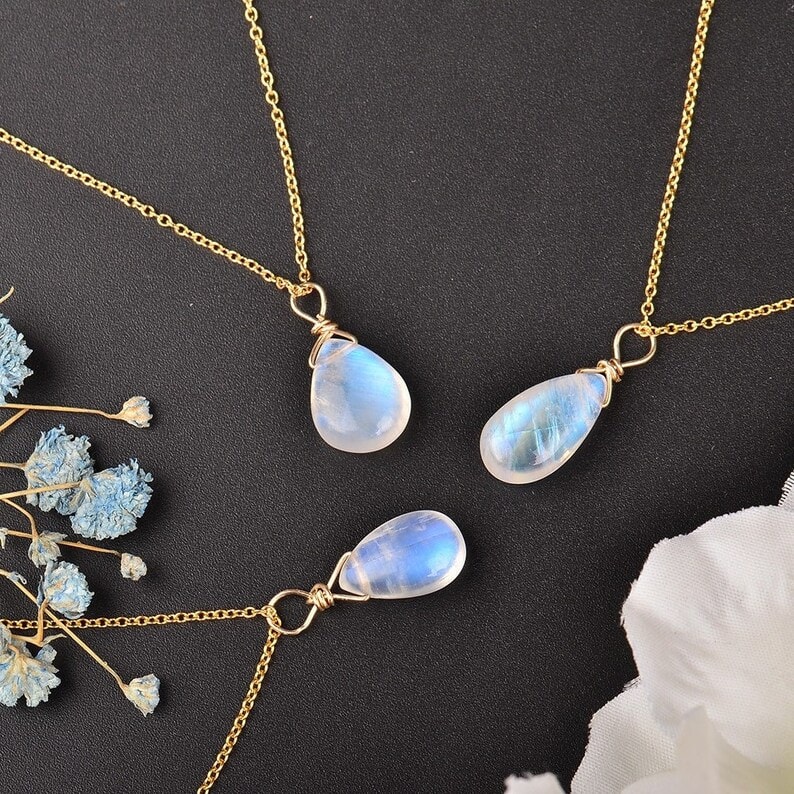
Blue moonstone displays a unique blue sheen, which seems to glow from within the stone. This iridescence, known as adularescence, gives the stone an otherworldly appearance and makes it a popular choice for jewelry designers.
Blue moonstone is a relatively soft stone, with a hardness of 6-6.5 on the Mohs scale, which means it’s best suited for use in earrings, necklaces, and other types of jewelry that are not subjected to rough use. Its serene and calming color is believed to promote inner peace and harmony, which is why it’s a popular choice among those who practice meditation and other spiritual practices.
22. Blue Lace Agate
This gemstone has delicate and intricate banding patterns in soft shades of blue and white. It is a type of chalcedony with a hardness of 6.5-7 on the Mohs scale, which makes it a durable stone for everyday wear.
It’s believed to promote tranquility, calmness, and emotional balance, making it a popular choice for those seeking inner peace and harmony. Blue lace agate is often used in jewelry designs, including necklaces, bracelets, and earrings, and is sometimes paired with other gemstones to create unique and eye-catching pieces.
23. Blue Kyanite
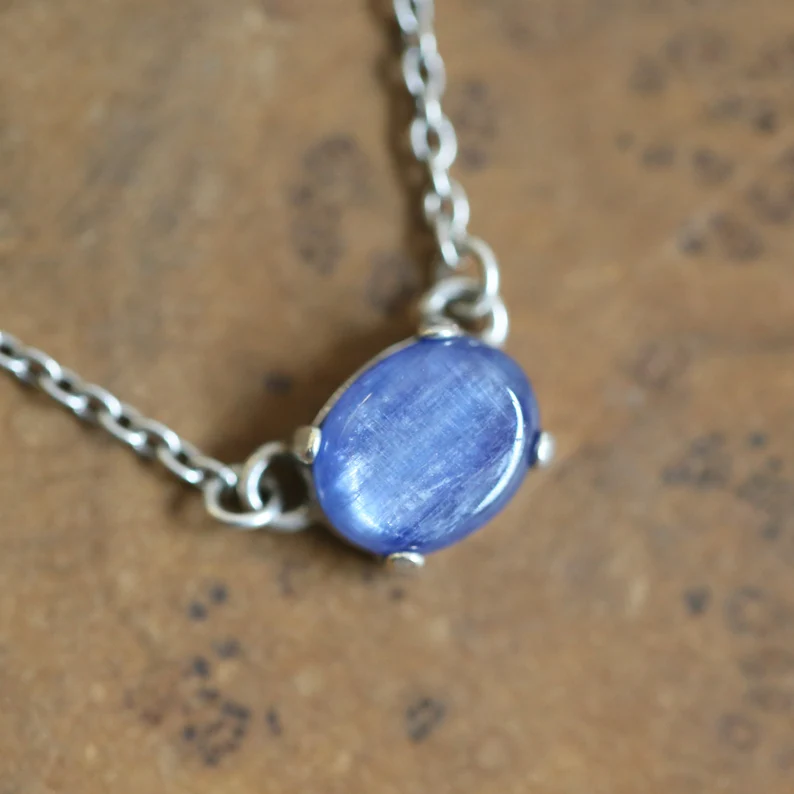
Blue kyanite is a gemstone with a unique blade-like shape that sets it apart from other gemstones. It’s a hard stone, ranking at 4.5-7 on the Mohs scale, which makes it a durable option for use in jewelry. Blue kyanite is known for its metaphysical properties, and is believed to promote communication, clarity, and peacefulness.
This gemstone is often used by healers and spiritual practitioners to enhance meditation, promote deep relaxation, and release negative energy. Blue kyanite’s beauty and mystical properties make it a popular choice for jewelry designers, who often use it in necklaces, earrings, and bracelets.
24. Larimar
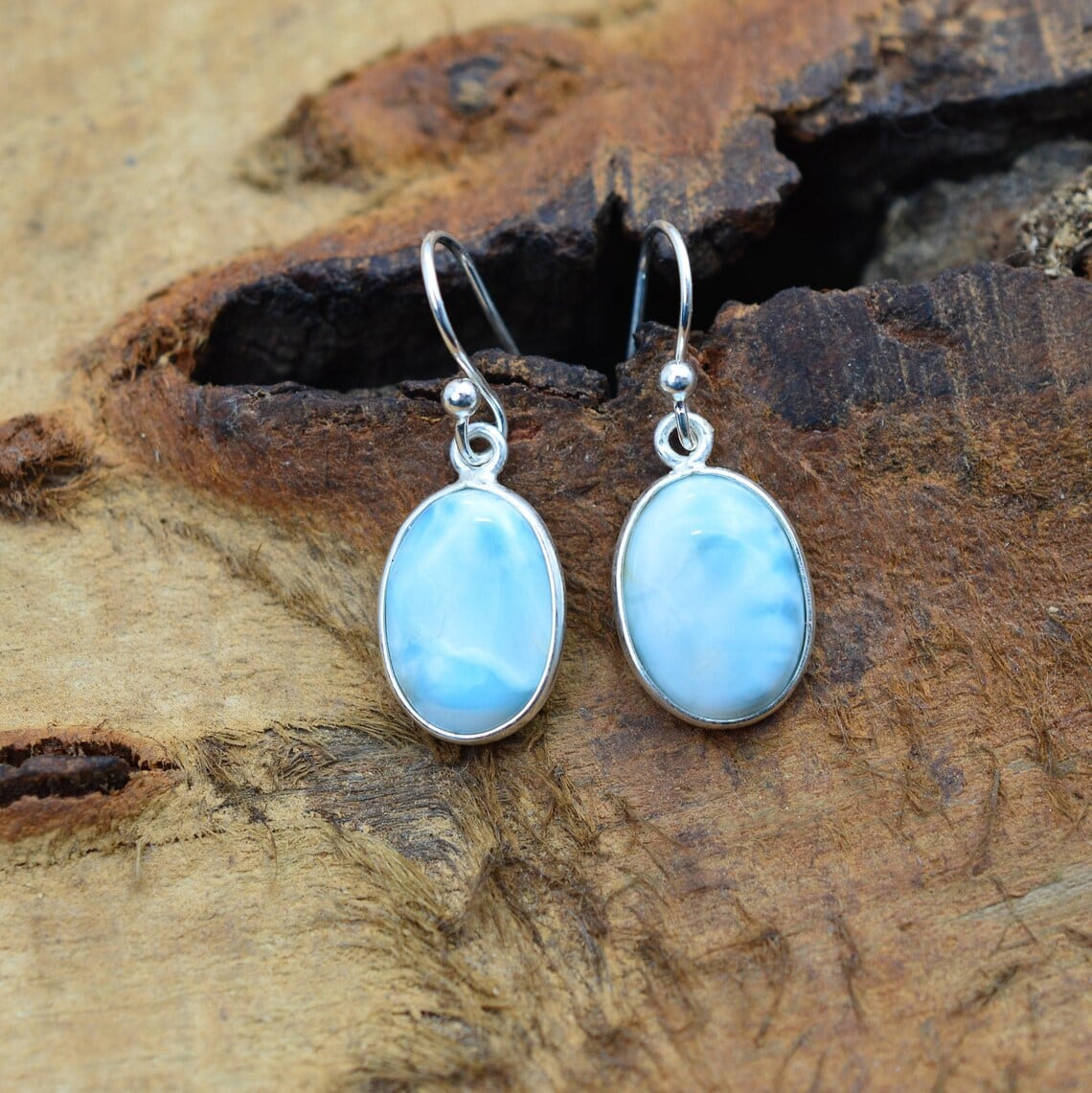
Larimar is a rare and exquisite gemstone found only in the Dominican Republic. With its unique blue-green color and intricate patterns resembling ocean waves, it’s often called the “Caribbean gemstone” or “Atlantis stone”.
Larimar is a soft stone, with a hardness of 4.5-5 on the Mohs scale. Aside from its use in jewelry, it’s believed to promote serenity, tranquility, and relaxation, making it a popular choice among those seeking inner peace and harmony.
This gemstone is often used in jewelry designs that evoke the natural beauty of the ocean, and is prized for its unique and striking appearance. Whether worn for its aesthetic or spiritual properties, Larimar is a truly enchanting gemstone that’s sure to capture the imagination.
25. Blue Lagoon Quartz
Known for its intense blue color and swirling patterns that resemble the waters of a tranquil lagoon, this unique stone is a type of quartz that’s popularly used in jewelry. It’s treated with a special coating to achieve its distinctive blue hue.
Blue Lagoon Quartz has a hardness of 7 on the Mohs scale, making it a durable and long-lasting gemstone for use in jewelry. It is believed to enhance communication and promote self-expression, making it a popular choice for those who wish to communicate their thoughts and ideas more effectively.
It’s typically used in jewelry designs to add a pop of color and interest and is prized for its affordability and versatility.
Which Blue Gemstone Should I Choose?
Choosing the right blue gemstone for your jewelry design can be a daunting task, as there are so many stunning options to choose from. The choice ultimately depends on your personal preference, the purpose of the jewelry, and the qualities you wish to convey through the gemstone.
By understanding the unique properties of each gemstone, you can choose the perfect blue gemstone for your jewelry design and create a piece that’s both beautiful and meaningful.
For Engagement Rings
Blue diamonds are the hardest and most valuable of all blue gemstones for engagement rings. If a mined blue diamond is beyond your budget, consider a synthetic version.
Blue sapphire is the most popular choice due to its deep blue color, durability, and symbolism of loyalty and faithfulness.
Aquamarine is another popular choice, with its serene blue color reminiscent of the ocean, durability, and a hardness of 7.5-8 on the Mohs scale. Blue topaz is a beautiful and affordable option with a hardness of 8 on the Mohs scale, while blue spinel offers a unique and affordable alternative to blue sapphire.
However, most other blue gemstones are simply too soft for daily wear in an engagement ring. They will require proper maintenance and sometimes even replacing.
For Costume and Fashion Jewelry
Blue gemstones are a popular choice for costume and fashion jewelry as they add a pop of color and vibrancy to any outfit. Some ideal blue gemstones for this purpose include:
- Blue Chalcedony: This gemstone has a soft, calming blue color and is perfect for bohemian or beach-inspired jewelry.
- Blue Lace Agate: With its unique banding and soft blue color, blue lace agate is a popular choice for statement jewelry pieces.
- Lapis Lazuli: This deep blue gemstone with golden flecks has been used for jewelry for thousands of years and is perfect for adding a touch of luxury to any outfit.
- Turquoise: A classic choice for bohemian and southwestern-inspired jewelry, turquoise has a vibrant blue-green color and adds a pop of color to any outfit.
Ultimately, the choice of blue gemstone for costume and fashion jewelry comes down to personal style and preference.
Soft Gemstones
Soft blue gemstones can be used for a variety of purposes, such as in jewelry, home décor, and healing practices. These gemstones have a gentle and subtle appearance, making them well-suited for creating a calming and soothing atmosphere.
In terms of the hardness scale, a “soft” gemstone typically refers to a gemstone that has a hardness rating of 5.5 or lower on the Mohs scale. Some examples of soft blue gemstones include turquoise, opal, and fluorite.
Despite their softer nature, these gemstones can still be used in jewelry and other decorative applications with proper care and handling. They are often used in pieces that require a delicate and feminine touch, such as drop earrings or dainty pendants.
Overall, soft blue gemstones offer a unique and tranquil beauty that can be incorporated into a variety of applications to create a peaceful and calming atmosphere.
FAQs about Blue Gemstones for Jewelry
What is a common blue stone for jewelry?
Blue topaz is a common blue stone for jewelry, known for its vibrant color and durability.
What are blue stones that look like diamonds?
Blue stones that look like diamonds include blue zircon, blue sapphire, and aquamarine, which all have a similar sparkle and brilliance.
What is the most affordable blue gemstone?
Lapis Lazuli is considered one of the most affordable blue gemstones, making it a popular choice in jewelry and decorative items.
What blue rock is used on Indian jewelry?
One blue rock used in Indian jewelry is blue sapphire, which is highly prized for its beauty and cultural significance.
What are the rarest types of blue gemstone?
Some of the rarest types of blue gemstones include tanzanite, benitoite, and painite, which are highly valued for their unique coloration.
Wrapping Up
Blue gemstones offer a wide range of beautiful and unique options for use in jewelry. From the more affordable lapis lazuli and blue topaz to the rare and valuable tanzanite and benitoite, there is a blue gemstone to suit every taste and budget.
Regardless of the choice, blue gemstones offer a stunning way to add a pop of color and personality to any piece of jewelry, making them a beloved choice among collectors and jewelry enthusiasts alike.


